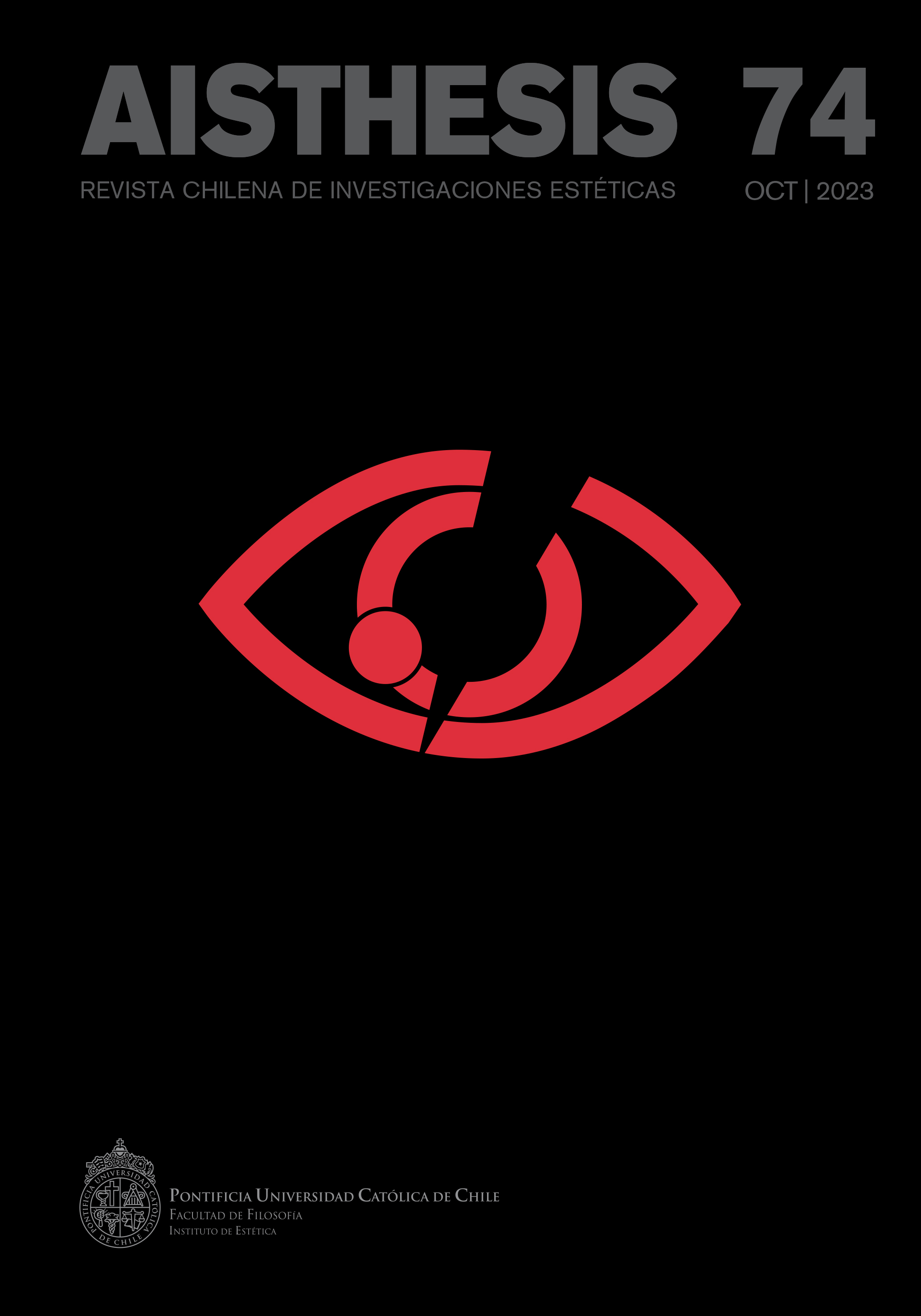Español Español
Main Article Content
Abstract
Throughout the 20th century and up to the present day, many artists have addressed the archive by questioning its function, classification systems, legitimacy, registration technologies or inclusion/exclusion protocols. Considering that within digital culture, AI has become a key factor for information management, this article explores how the use of these technologies in art is offering new perspectives to think about the archive, heritage and memory.
Within the meshwork of existing practices and approaches that operate creatively challenging traditional hierarchies and protocols of the archive, we will pull from two strings: 1) on the one hand, the group of appropriationist-type tactics that operate by activating new interpretations of already constituted archives; 2) on the other, those that propose the creation of new archives, generally dealing with scattered elements that were previously ignored or discarded.
We will delve into these two anarchival strategies by focusing on two case studies that address critically the filmic and audiovisual heritage: Jan Bot: bringing film heritage to the algorithmic age and the Oráculo de Capturas de Pantalla (OCP). In both cases we will study the strategies by which other possibilities are opened up for history, and the place given to algorithms in their construction.
Downloads
Article Details

This work is licensed under a Creative Commons Attribution-NonCommercial-ShareAlike 4.0 International License.
All contents of this electronic edition are distributed under the Creative Commons license of "Attribución-shareAlike 4.0 Internacional" (CC-BY-SA). Any total or partial reproduction of the material must mention its origin.
The rights of academic works published in this publication belong to their authors., who grant to AISTHESIS: Revista Chilena de Investigaciones Estéticas the license for its use. The management of the permits and the authorization of the publication of the images (or of any material) that contains copyright and its consequent rights of reproduction in this publication is the sole responsibility of the authors of the articles
References
Referencias
Austin, J. How to Do Things with Words: The William James Lectures Delivered at Harvard University in 1955. Harvard Univ. Press, 2009, 2nd edition [repr.].
Barad, K. «Posthumanist Performativity: Toward an Understanding of How Matter Comes to Matter». Journal of Women in Culture and Society, vol. 28, nº 3, 2003, pp. 801-831.
Beltrame Trento, F. «The Pedagogy of The Anarchive». Research Catalogue, 2019. Visitado 19 may. 2022: https://www.researchcatalogue.net/view/659630/659631
Benjamin, W. «Sobre el concepto de historia». La dialéctica en suspenso. Fragmentos sobre la historia. Trad. Pablo Oyarzún Robles. Universidad Arcis y LOM Ediciones, 2002.
Bianciotti, M. y M. Ortecho. «La noción de performance y su potencialidad epistemológica en el hacer científico social contemporáneo». Tabula Rasa, nº 19, 2013, pp. 119-37.
Butler, J. «Performative Acts and Gender Constitution: An Essay in Phenomenology and Feminist Theory». Theatre Journal, vol. 40, nº 4, dic. 1988.
Cocteau, J. Jean Cocteau Speaks to the Year 2000, 1962. Visitado 7 oct, 2021: https://www.youtube.com/watch?v=z-x-wNiN4Hk
Derrida, J. Mal de archivo. Una impresión Freudiana. Editorial Trotta, 1997
Domínguez Rubio, F. «Preserving the Unpreservable: Docile and Unruly Objects at MoMA». Theory and Society, vol. 43, nº 6, 2014, pp. 617-645.
Duguet, A. «Anarchives. Archives numériques sur l’art contemporain». Visitado 28 abr. 2022: https://www.anarchive.net/
Ernst, W. Digital Memory, and the Archive. University of Minnesota Press, 2013.
Flusser, V. Hacia una filosofía de la fotografía. Trillas, 1990.
Foucault, M. La arqueología del saber. Siglo XXI, 2009 [1969].
Fuller, M. Media Ecologies. Materialists Energies in Art and Technoculture. MIT Press, 2007.
Galanter, Ph. «What is Generative Art?». GA2003-6th Generative Art Conference, 2003. Visitado 15 oct. 2021: https://www.philipgalanter.com/downloads/ga2003_paper.pdf
Guasch, A. M. Arte y Archivo 1920-2010. Genealogías, tipologías y discontinuidades. Akal, 2011.
Hofman, V. y V. Montero. Entrevista a Pablo Núñez Palma. Trabajo de campo de la presente investigación, junio 2021.
––. Entrevista a Coni Rosman. Trabajo de campo de la presente investigación, septiembre 2021.
Mackern, B. «Soundtoys». Visitado 7 oct. 2021: http://soundtoys.netart.org.uy/
Núñez Palma, P. y B. Loogman. Jan Bot: Bringing Film Heritage to the Algorithmic Age, 2018. Visitado 7 oct. 2021: https://www.jan.bot/
––. «Meet the Research behind Jan Bot Eye Filmmuseum First Robot Filmmaker». Visitado 10 ago. 2023: https://medium.com/janbot
Osthoff, S. Performing the Archive: The Transformation of the Archive in Contemporary Art from Repository of Documents to Art Medium. Atropos Press, 2009.
Rosman, C. «El oráculo de las capturas de pantalla», 2020. Visitado 7 oct. 2020. https://eloraculo.com.ar/
Soto, A. La performatividad de las imágenes. Metales Pesados, 2020.
Stoler, A. L. «Colonial Archives and the Arts of Governance». Archival Science, nº2, 2002, pp. 87-109.
Tello, A. M. Anarchivismo. Tecnologías políticas del archivo. La Cebra, 2018.
––. «Una archivología (im)posible. Sobre la noción de archivo en el pensamiento filosófico». Síntesis. Revista de Filosofía, vol. I, nº 1, 2018, pp. 43-65.
Zielinski, S. «Variantología Latina». ISEA2010 RUHR Conference Proceedings - Latin American Forum I: Variantologia Latina, 2010, pp. 295-296.
––. «AnArcheology for AnArchives: Why Do We Need–Especially for the Arts–A Complementary Concept to the Archive?». Journal of Contemporary Archaeology, vol. 2, nº1, 2015, pp. 1-147.
